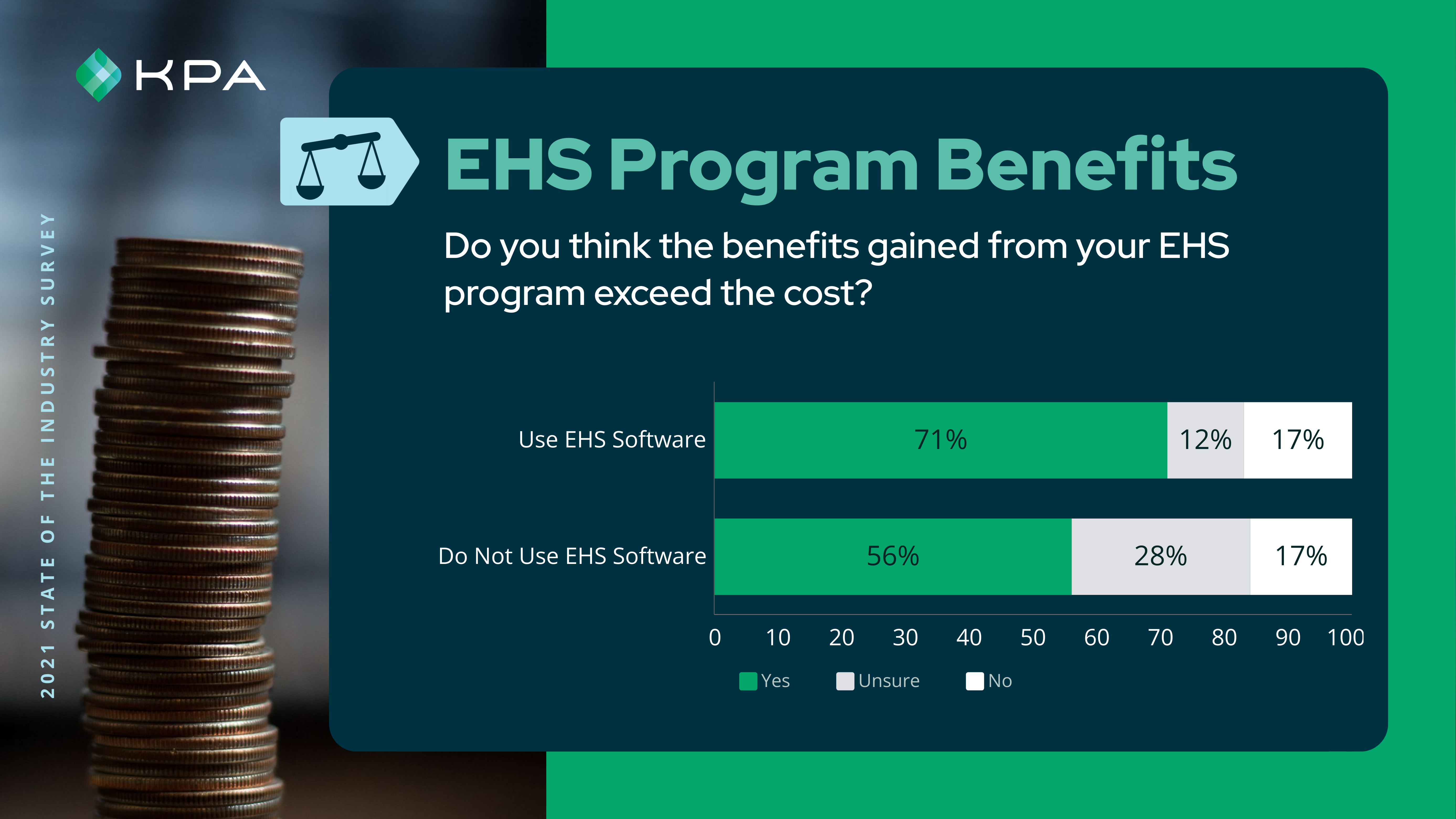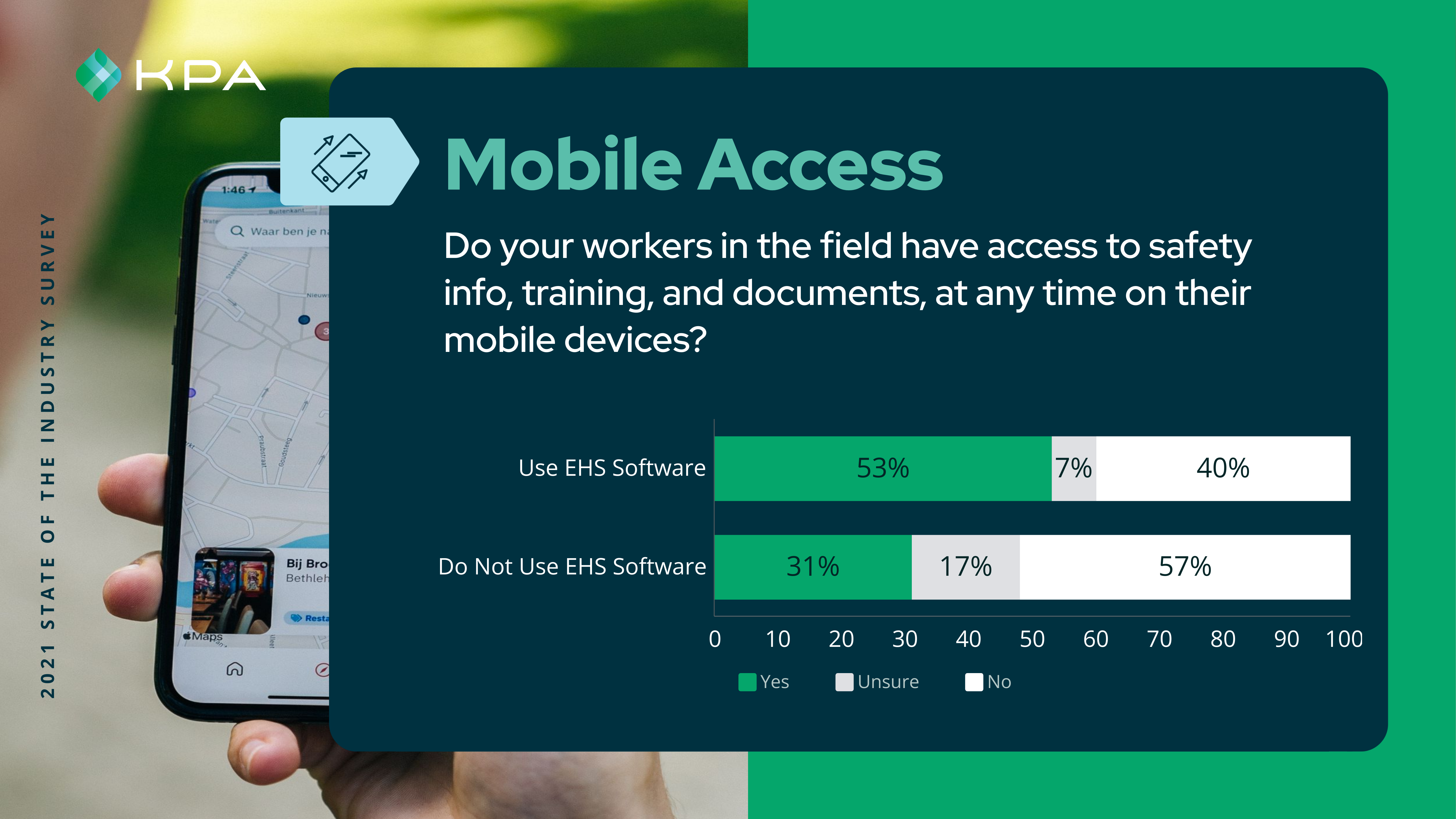Recommendations backed by solid data have a higher chance of becoming reality than ones that aren’t. Looking to advocate for adding software to your safety program? We’ve got a treasure trove of data to help you make your case.
Following up on our previous post, we’re continuing to dive into the findings of the 2021 “State of the Market: EHS Program Performance” survey.
Why Invest in EHS Software?
When comparing reports from software users with non-software users, findings report that software users are enjoying a higher-performing EHS program. Companies who use EHS software report:
- More accessible data on the health of safety programs
- Good or excellent program performance in incident reporting and tracking
- Increased employee engagement because of more consistent and efficient communication
And perhaps the most telling finding of all, nearly three-fourths of software users indicate the benefits associated with EHS software outweigh the cost of investment.
Download the full study to learn how and where organizations have improved performance using EHS software.
Program Confidence and Performance Higher for Software Users
Survey results indicate that safety program performance, and confidence in those programs, improve with increased investment in EHS software. Nearly three-fourths of respondents who use EHS software reported that the benefits gained outweigh the cost of investment. In addition, 74% of software users indicate their programs are “strong with room for improvement,” compared to 50% of non-users. Of companies who see room for improvement in their EHS programs, 60% are already allocating up to 25% of their budget to technology solutions, showing these companies are capable of increased investment.

71% of EHS software users indicate benefits outweigh the cost; 45% of non-software users either do not think the benefits outweigh the costs or are unsure.
What’s more, EHS software ranked particularly high in incident reporting and tracking, with 85% of software users ranking the program component as complete or strong. Good or excellent performance was also indicated with vast margins in areas of “inspections and audits” as well as “preventive and corrective action communication and reporting.” Overall, four of the five key areas of EHS programs — incident reporting and tracking, inspections and audits, employee training, and preventive and corrective action communication and reporting) —ranked above average in performance.
Accessing EHS information and training through mobile devices is a trend that continues to grow. For companies using EHS software, the percentage jumps to 53% for workers in the field using phones or other mobile devices to document incidents, submit safety reports, access training, and more.

Companies reported above-average EHS program performance in incident reporting and tracking, inspections and audits, employee training, and preventive and corrective action communication and reporting. Above-average performance was indicated in four of the five key areas of EHS programs.
Making the Case for EHS Software
EHS software users serve as evidence to illustrate that when companies orient investment in EHS programs as an opportunity for improvement, they can unlock the benefits of a high-performing program.
Next week we’ll dive into EHS software’s impact on employee engagement. Stay tuned!
